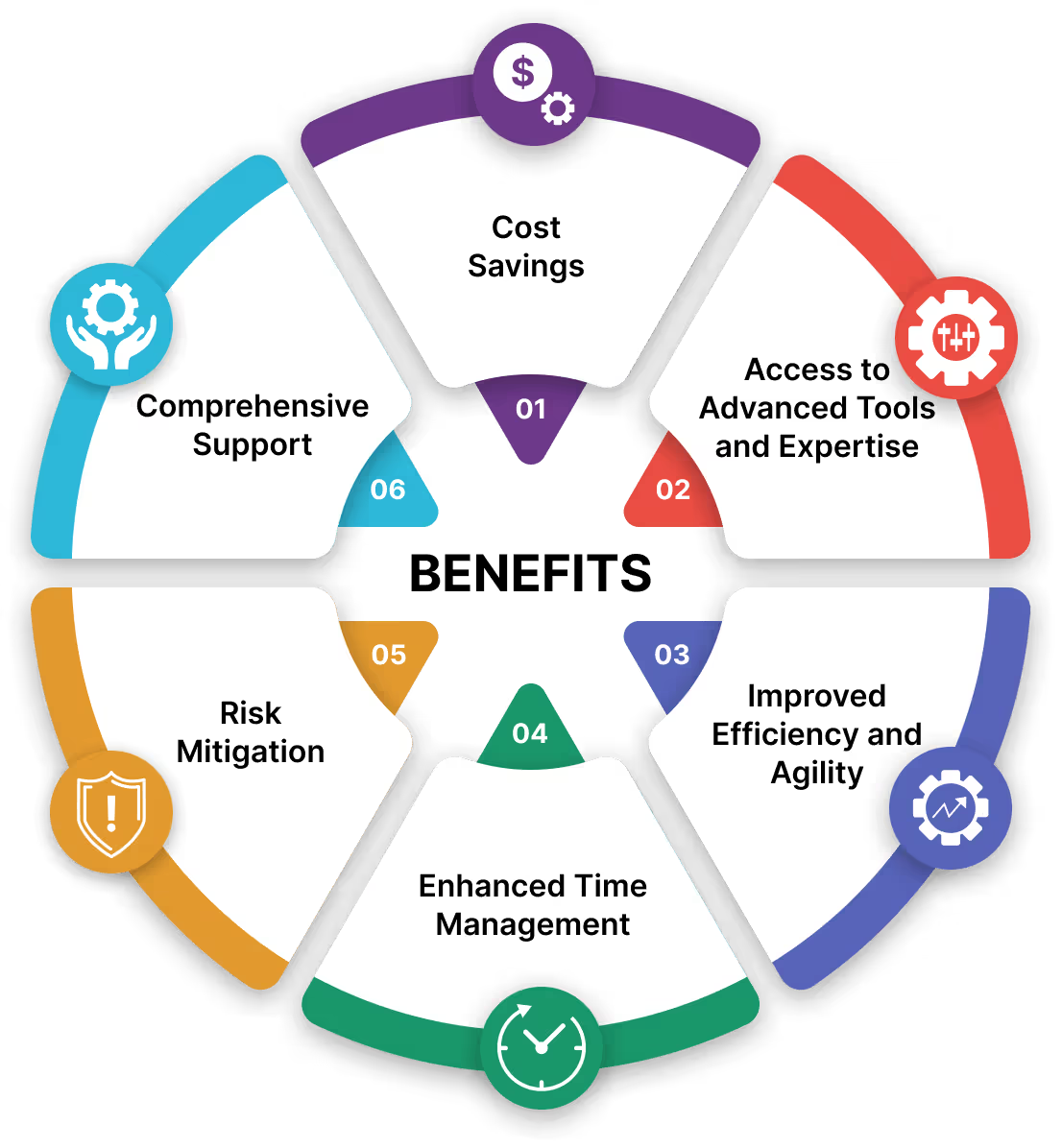Finding a qualified team can be difficult, even if you’ve been outsourcing for a long time. The truth is that in order to hire a healthcare software developer, you have to consider numerous factors to find a perfect match.
However, when you cooperate with qualified professionals, you undeniably benefit from reduced costs, access to cooperating knowledge, and top-notch results. That’s why businesses are increasingly building multinational teams, integrating talent from diverse countries and cultures, enabled by the virtual elimination of geographical barriers.

In this article, we will discuss all the nuances and enable you to confidently assemble a competent team by identifying key competencies and capitalizing on market knowledge. You will learn about all the crucial nuances that will help you narrow down your search and make an informed hiring decision.

The cost of medical software engineering depends significantly on the specific IT services required and the composition of the team. According to statistics, in 2024, the worldwide healthcare SaaS market was valued at USD 34.84 billion. By 2025, it had grown to USD 38.50 billion, and by 2034, it was projected to reach USD 94.56 billion, indicating a solid CAGR of 10.50% from 2024 to 2034.
Here’s a breakdown of key roles and their responsibilities within an outsourced team.
Here are the average hourly rates for outsourcing services that vary by region.
With the average rate in Central and Eastern Europe being $50/hour, these estimates can help you better understand the cost structure.
Now that we’ve discussed everything you need to know to build a comprehensive picture of the process, it’s time to answer the main question: how to make the right choice? There is a high demand for quality services, and the healthcare IT market size is estimated at USD 413.14 billion in 2025 and is expected to reach USD 839.67 billion by 2030, at a CAGR of 15.24% during the forecast period (2025-2030). Therefore, it might be confusing at first when trying to navigate through the industry. To help you out, below we provided you with the factors that will assist you in making your decision.
The first step in building end-to-end healthcare software is self-assessment. Start by thoroughly analyzing your practice and identifying specific technological challenges. In the 21st century, technology is an integral part of operations, so it’s crucial to pinpoint bottlenecks in areas like scalability, administrative workflows, and care delivery processes.
You might wonder how the program can address these issues and seamlessly integrate them into your practice. The solution lies in tailoring features and functionalities to meet your unique needs. Effective collaboration with your medical device software engineer is essential. They should understand your workflows and craft custom solutions that enhance care and bridge existing gaps.
Moreover, scalability and flexibility are vital aspects. As your client base grows, the platform must adapt to meet increased demands, ensuring long-term value and reducing costs associated with future enhancement.
A skilled IT partner with expertise in healthcare software development companies can help optimize care delivery, grow your practice, and ensure compliance. Look for providers with a proven track record and extensive experience in this domain.
This is crucial because the process is complex and must adhere to stringent regulations, including HIPAA, HITRUST, GDPR, and HL7. By partnering with an experienced healthcare software development company, you can avoid common pitfalls and ensure full compliance. Additionally, it can be tailored to your exact specifications, aligning perfectly with your needs.
The technological stack used to develop healthcare software significantly impacts its performance and adaptability. Choose a partner whose stack aligns with your needs. Evaluate software engineers in healthcare methodologies—such as Agile or Waterfall—and determine which approach best suits your project.
Your program should be scalable, interoperable, and capable of integrating seamlessly with existing platforms and infrastructure. This ensures smooth communication and data exchange across systems.
Future-proofing your technologies saves time and money as technology evolves. Collaborating with a partner that offers ongoing support and maintenance is highly beneficial. Their involvement ensures you remain up-to-date and can handle your practice’s growth.
Select a strategy that accommodates advancements in technology and increasing data volumes, keeping your system scalable and efficient.
Examine the vendor’s past projects through case studies and client testimonials. Seek references to understand their service quality and client satisfaction levels. Additionally, check their online reputation to assess their reliability.
Before signing a contract, carefully review the financial terms and conditions. Ensure the proposed cost aligns with your budget and that it delivers the required features. Confirm details like intellectual property rights, payment schedules, and delivery timelines.
Transparency is key—discuss support and maintenance services, including updates, bug fixes, and technical assistance, to avoid unexpected expenses later. Clear communication at every stage of the contract ensures a smooth process and long-term success.
The location of your partner significantly influences the working model and mutual objectives. Selecting the best location depends on your project requirements, budget, and the desired level of collaboration.
The cost of hiring varies widely by region, driven by differences in economic conditions and income levels. By balancing project complexity with regional cost advantages, you can optimize expenses while ensuring high-quality outcomes.

Redistributing can be a profitable approach in the ever-changing technology market. Additionally, by strategically delegating tasks, your company can tackle numerous challenges associated with staying current with innovations. Here are the main factors that will help you solve all your organization's challenges and create a flourishing environment.
You get the opportunity to significantly reduce expenses and wisely manage your budget. Partnering with external teams is often the most cost-effective approach in various workflows, allowing you to avoid unnecessary infrastructure investments.
Through specialized firms, you gain access to top-tier professionals and resources without the financial burden of training, recruitment, or maintaining full-time staff. This includes bypassing costs like salaries, benefits, and management overhead for in-house teams, ultimately freeing up your budget for other priorities.
By collaborating with a reliable partner, you unlock access to highly skilled professionals and state-of-the-art technology. Outsourcing ensures that your projects are handled by experts, reducing costs while maintaining quality.
For instance, CleverDev Software provides cutting-edge solutions designed to enhance efficiency and deliver top-notch results, making us a trusted choice.
Custom healthcare software developers alleviate pressure on internal teams by delegating technical tasks to experienced specialists. Whether you delegate the entire project or specific components, this approach promotes agility, enabling faster project completion and quicker time-to-market.
Collaborating with external teams also ensures seamless integration with your in-house operations, streamlining the process and allowing for smooth, efficient project delivery.
Keeping pace with rapid technological advancements often demands continuous updates and improvements. Various technical tasks allow your team to focus on high-priority responsibilities while leaving specialized tasks to experts.
Besides saving time, this strategy also increases productivity by enabling your staff to concentrate on their core competencies, boosting overall operational efficiency.
Strategically delegating tasks helps reduce risks and build a more resilient structure. Assigning non-critical components, such as healthcare ERP systems, to external providers ensures your in-house team can focus on essential operations.
However, it's vital to carefully evaluate decisions to ensure alignment with your goals and minimize potential risks.
Outsourcing provides access to unparalleled support and maintenance services. Reliable partners deliver continuous, round-the-clock assistance to ensure a seamless, bug-free system.
This ongoing support keeps your operations running smoothly and helps you stay ahead of the competition by addressing challenges proactively and maintaining high standards beyond project completion.
By leveraging it effectively, you can enhance your operations, reduce costs, and achieve greater agility while maintaining focus on your core objectives.

With the growing demand for advanced technology and the critical importance of patient care, the industry presents unique technological challenges. Key obstacles include addressing cybersecurity risks tied to sensitive information, ensuring compatibility across diverse systems, and adhering to strict regulatory requirements.
Ensuring the smooth integration of current digital technologies into your operations may be somewhat challenging, especially when it comes to application development. Alright, let's delve further into the most important matters.
The foundation of successful program initiatives is effective communication. The cultural norms and working hours of a team located in a foreign time zone could be difficult to navigate.
The differences between them might cause confusion, which in turn can cause delays and poor communication. Nevertheless, with the assistance of a trustworthy team, you may lessen the impact of these dangers by establishing open channels of communication, making use of collaborative tools, and keeping everyone informed through consistent updates.
When you're reassigned, it could be difficult to keep an eye on the quality of your app. The work of external teams could not meet your expectations since they don't understand your quality standards.
However, with stringent quality assurance methods, frequent code reviews, and quick establishment of accurate measurements, the dedicated partner will still build a website without this danger.
Privacy and security are paramount since a client's reputation and legal standing can be seriously damaged by breaches or mistreatment. When you find medical software developers, you can be certain that all the required security steps will be taken.
To safeguard sensitive patient information, they will establish stringent security measures and guarantee compliance with regulations like HIPAA.
Your organization and the external team may have difficulties in effectively collaborating due to linguistic and cultural barriers. Difficulties and misconceptions could arise as a result of differences in communication styles, company cultures, and values.
Transparent communication and cultural sensitivity training, however, may readily overcome these obstacles.
When developing the healthcare app development, there is a substantial danger of working with an unreliable or untrustworthy vendor. There is a risk that some vendors won't have the right knowledge, will provide poor results, or won't be able to fulfill deadlines.
Evaluation of the vendor's track record and reputation is, hence, an essential component of the procedure. Software engineer healthcare goods of consistently high quality may be assured by collaborating with a reliable supplier that has a history of successful projects.
Outsourcing can enhance patient care and elevate your company’s technological capabilities. The success of such collaborations relies on key factors, including domain expertise, clear communication, robust data security, and comprehensive documentation.
By making informed decisions and adhering to best practices, you can effectively leverage technology while upholding top-tier service and compliance in this ever-evolving industry.
If you're looking for a comprehensive solution tailored to your specific challenges, our team is ready to collaborate with you. We aim to craft a customized strategy that aligns with your business needs. Contact us today, and we will get back to you right away!


Our newsletter is packed with valuable insights, exclusive offers, and helpful resources that can help you grow your business and achieve your goals.